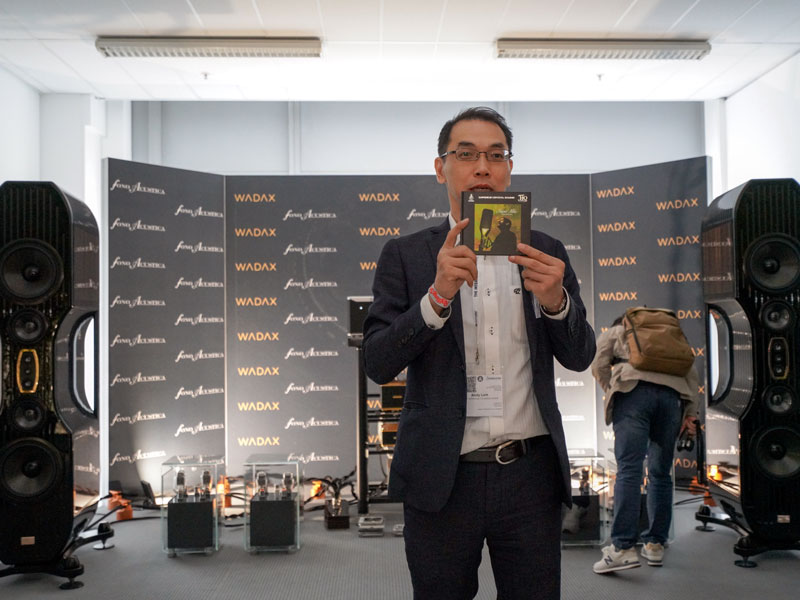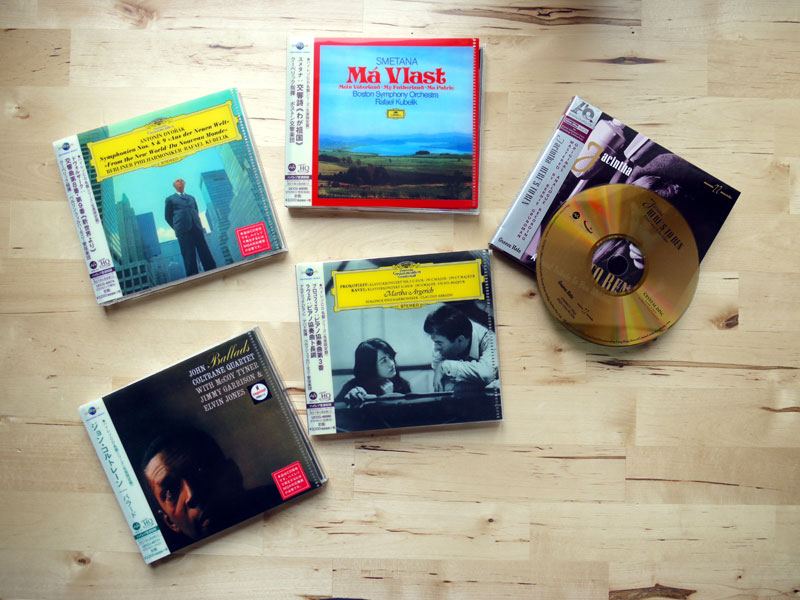High End 2019 • TABlog
s file replay becomes the dominant way to play music -- at least among younger listeners -- record companies have scrambled to monetize the value sitting in their recording vaults, with each day bringing a new flood of CD boxed sets, collections and retrospectives that often run out at around two dollars a disc. I know the labels are struggling to make money, but at those prices you have to question whether they are actually achieving their goal.
Increasingly, salvation seems to lie in the shape of enhanced CD formats, with MQA CD starting to appear amidst a host of alternative offerings, all promising improved sound quality. The most impressive of these is the Crystal Disc or Glass CD, discs in which the polycarbonate material is actually replaced with laminated crystal glass. The resulting disc weighs nearly 30 grams (around an ounce) and clanks ominously if you drop it into the disc drawer, but it’s hard to argue with the performance that results, which suggests that for all the ballyhoo surrounding high-res files and upsampling, there’s actually nothing wrong with the math behind 16-bit/44.1 digital. The problem is that Glass CDs are horrendously expensive and almost impossible to get outside Japan. Munich saw the announcement of the latest title, Jacintha’s Here’s To Ben, €1600 to you -- although that scores you the AQCD version too -- but also a chance to sit down with Yutaka Ueda, president and CEO of Memory-Tech -- one of the Japanese corporations leading the way when it comes to high-quality CD formats and production, and the irrepressible Andy Lam (above), GM of AQCD Technology Company in Hong Kong and chairman of the HK Record Merchant’s Association, a man who spent the Munich show demonstrating the differences between standard CD, UHQCD and Glass CD at every opportunity. Memory-Tech is the sole producer of Crystal CD discs (Glass CDs), so it was an opportunity to understand both why these discs are so expensive and the company is making an effort to produce a more affordable and viable alternative. The first challenge is that the production of Crystal CDs is an entirely manual process, with only around ten people trained in its complexities, with a daily production volume of less than 100 discs. You can begin to appreciate just why these discs are so expensive and why the supply is so limited. What is more interesting is the emergence of UHQCD discs -- mass-produced, polycarbonate discs that retain some of the more critical characteristics of the glass discs. Starting with the pit layer, UHQCD might not use the gold plating of the Crystal discs, but does plate with silver rather than using the raw aluminum layer of a standard CD. More importantly, that pit layer is then coated in the same photo polymer that contributes so much to the Glass CD’s performance, before being sealed in its polycarbonate skin.
There were plenty of opportunities to hear the
CD/UHQCD/Crystal Disc comparison at the show, and there’s no question of the
UHQCD’s superiority over standard CD, with more color, greater dynamic range, better
flow and timing and much greater transparency. Okay, it still doesn’t get close to
the astonishingly natural performance of the Crystal Disc, but it’s a more than
worthwhile step up on the standard item, especially given the asking price of around
€38 a disc. What’s more, with automated production and Universal Music fully
signed up to the format, the catalogue already extends to some 2000 titles, with around
100 being added each month. I picked up a quartet of interesting discs -- ranging from
Kubelik’s Má Vlast (with the Boston SO) to the Argerich/Abbado Prokofieff
Piano Concerto No.3/Ravel Piano Concerto in G Major recording. Throw in Kubelik’s
"New World" Symphony and Coltrane’s Ballads and you’ve got a
decent cross-section. |


